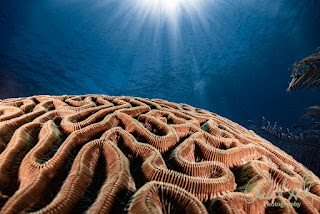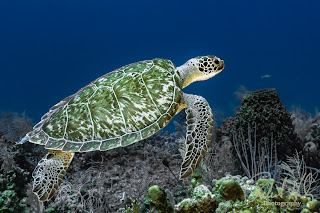The Essential Guide to Using Filters for Underwater Photography
Underwater photography enthusiasts often debate whether filters are necessary or not. While some swear by them, others prefer to rely on their preset white balance settings. However, it is observed that those who use cell phones, GoPro's, Sealife's, or compact cameras without video or strobe lights tend to use filters to enhance their picture quality straight out of the camera. Similarly, people who mostly shoot videos also benefit from the use of filters.
There are many different filters of color, but today, I am going to focus just on the three basic colors; Red, Magenta, and Yellow.
For those who prefer to use white balance settings, presetting them based on depth, time of day, visibility, and turbidity is a common practice. However, during night dives, a yellow filter is often used to improve contrast and show off fluorescents.
In contrast, photographers who shoot mostly during the day may choose to experiment with or without filters or white balance adjustments. Shooting in RAW mode and using post-processing to make the necessary white balance and color corrections is a popular alternative.
Whether you're documenting memories for family and friends or aiming for a feature in a dive magazine, mastering filters will elevate the color and clarity of your underwater shots. Let’s delve into how underwater camera filters can transform your photography.
Understanding Underwater Camera Filters
Underwater camera filters are critical accessories for divers who use cameras. They correct the color imbalances caused by the water's absorption of certain wavelengths of light. As you dive deeper, the water absorbs colors like red and orange first, which can leave your photos with a blue or green tint. Filters help correct these imbalances, ensuring that your underwater captures look vibrant and true to life.
How Filters Enhance Underwater Photography
Filters work by selectively blocking certain colors of light, thereby adjusting the overall color balance that reaches your camera's sensor. For instance, using a red filter in blue waters can compensate for the lack of red light, restoring the color balance and enhancing the natural appearance of the scene.
Types of Filters for Every Dive
Different environments require different types of filters to achieve the best results:
1. Red Filters: Ideal for blue or tropical waters, red filters are used to restore red hues that are lost at depths between 10 to 80 feet, helping your photos look warmer and more colorful.
2. Magenta Filters: These filters excel in green waters typical of freshwater lakes and reservoirs, reducing the green tint and bringing out more natural and balanced colors in your photos.
3. Yellow Filters: Used primarily during night dives or in low-light conditions, yellow filters improve contrast and make fluorescent colors pop, essential for capturing dynamic marine life.
Choosing and Using Filters Effectively
Selecting the Right Filter: The choice of filter depends on the water type and depth:
- Red Filters are best in clear, tropical waters and sunny conditions to bring back the natural warmth and depth lost underwater.
- Magenta Filters are perfect for freshwater settings where green tints can dominate.
- Yellow Filters enhance visibility and detail in low-light conditions, making them ideal for dusk or nighttime dives.
Depth Considerations: It’s important to select a filter based on your diving depth. Red filters, for example, work best between 10 to 80 feet. If you plan to dive deeper, additional lighting may be necessary to complement the filter.
Pro Tips for Using Filters in Underwater Photography
- Experiment Before Diving: Test your filters in controlled environments like pools to understand their effects.
- Adjust Camera Settings: Optimize settings such as white balance and ISO to further enhance the quality of your images, even with filters.
- Combine with Lighting: In deeper or darker waters, use external lighting like strobes or underwater lamps to illuminate dark areas and highlight details.
Conclusion
Filters are invaluable tools for any underwater photographer, from casual snorkelers to serious divers. They not only restore color fidelity but also add depth and vibrance to your underwater images. With the right filter and techniques, you're ready to capture the mesmerizing beauty of the underwater world.
Stay tuned and "Follow" for upcoming blogs on underwater photography tips and tricks for more in-depth insights. Please leave your comments and suggestions. Enjoy your diving and shooting experience!
I am eagerly anticipating your valuable feedback and suggestions.
Sincerely,
Bob Herb
|
|





Comments
Post a Comment
Please let me know your comments.